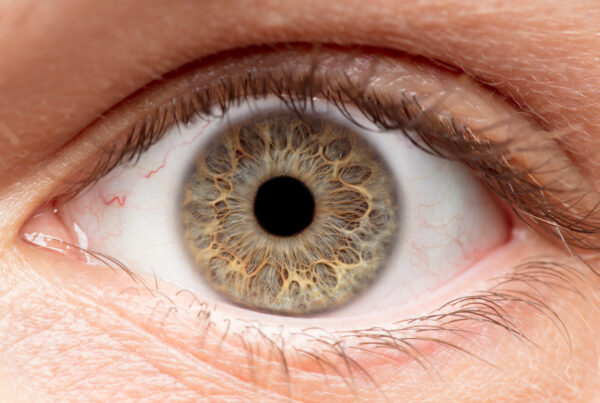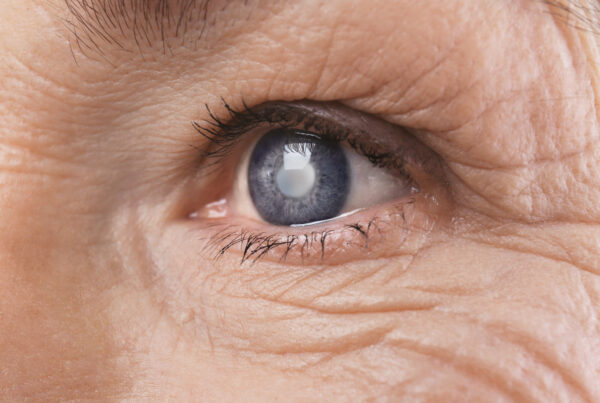
Allergy is a relatively modern-day medical phenomenon. Saying that doesn’t necessarily change the misery that one feels here in the Mid-West, but it is curious. The first symptoms of allergy in the eyes and nose were recorded in 1875. At the time, there was not a doctor to be found aware of this condition. The story is told that a gentleman presented to his physician with a tightly wrapped package of ragweed professing that his exposure to this benign plant produced an awful feeling of unwell. To prove his complaint, he unwrapped and demonstrated this immediate effect of watering and itching eyes, running nose and general misery. While still in general disbelief, the physician decided to write up his patient’s case for his colleagues. It would seem from this point forward, allergic conditions would rapidly develop in many countries.
The specific timing of this allergy emergence led to theories of how this came to be. It was proposed that there were large increases in arable (crop) farming producing ragweed pollen. Areas of England and the United States that did not grow these grasses were popularized as retreats from the condition during high allergy seasons. During this era, the wake of typhoid and cholera led to public hygiene changes to improve living conditions and water sources. By decreasing pathogens that cause disease, there may have been other organisms that live synergistically with the humans that were also altered. This theory continues to be explored as the hygiene theory. Relationships between allergy and the microbiome are continuing to be better understood. The microbiome is defined as the sum of all the host’s micro-organisms, both harmful and helpful. The interplay between human cells and its microbiome strikes a balance to aid in immune defense against an environment of infections and allergic responses.
In the 1960s, there was a sharp increase in children’s asthma, which prior to this time had not been common let alone of epidemic proportions. Many of these children were shown to have positive allergic responses to dust mites. An interesting hypothesis of that time parallels today’s health concerns over excess electronic device usage. As television programming targeted children in the 1950s, it led to increased indoor time just as today’s gaming, resulting in more dust mite exposure and decreased physical activity. While the hygiene theory for allergies was also proposed for asthma, the timing correlates better to the advent of tighter sealed homes, greater use of carpet, more television, less outside time and less physical activity.
This bit of history sets the stage for a diet and lifestyle approach to allergic conditions. If you haven’t already read June’s blog, now is the time to review mast cells, histamine and the arsenal of products and treatments available to treat allergy eyes before we get started down a different path.
There are certain foods known for their mast cell stabilizing and anti-histamine properties. Watercress, onion, moringa, chamomile, nettle, apples, and Brazil nuts are some examples. A supplement called Natural D Hist by Orthomolecular Products is an effective blend of anti-histamine supporting botanicals. The benefit of botanical anti-histamines is their non-drying effect on the tear film. Even a small dosage reduction in oral anti-histamines can improve dry eye symptoms. Anti-inflammatory foods such as turmeric and SMASH (sardines, mackerel, anchovy, salmon and herring) fish also contribute to a healthy immune response.
Our eye’s natural immune defense is the tear film. The components of the tear film regulate the exposure of allergens and respond accordingly. Studies propose that the tear film’s microbiome also impacts the regulation of this environment. This concept proposes that maintaining balance of micro-organisms is important and possibly modifiable. Perhaps we will see probiotic eye drops in the future. It is also plausible that preservatives in our eye drops may have inherent antimicrobial properties that further alter this microbiome. Preservative-free drops, when available, may serve as an optimal choice until these concepts are better understood.
While the ocular surface microbiome is continuing to be explored, there are numerous studies to suggest that early development of our gastro-intestinal microbiome is associated with allergic disease. Concepts in how babies are delivered, what their diets are composed of, timing of allergenic food exposure, and early childhood antibiotics are all being studied as they impact the microbiome and allergic disease. But even when our early microbiome development is less than ideal, there are strategies that allergy sufferers can utilize to support a diverse, healthy intestinal environment such as probiotic foods, which include yogurt, kefir, kombucha and kimchi and prebiotic foods such as apple, asparagus, dandelion greens, eggplant, flaxseed, chia seeds, spinach, garlic, jicama, and onions. Supplemental probiotics are also available. While it is understood that we are not actually populating our microbiome with these supplements, they do serve as an opportunity for our immune system to encounter “safe” strangers in order to keep the system primed and ready to work.
The last of our history lesson says get outside and move. Being outdoors is complicated for some but in the months that are more tolerable, find a forest. Forest trips are not only shown to reduce stress but have immunological effects on allergies. If you haven’t heard of “forest bathing,” you have now. As our first frost will appear soon, it’s a good time to plan those outdoor outings and open the windows to let fresh air inside. The beauty of the Autumn colors in the forest is also motivating. Implementing these small lifestyle changes over the Fall and Winter may lead to a better Spring!



